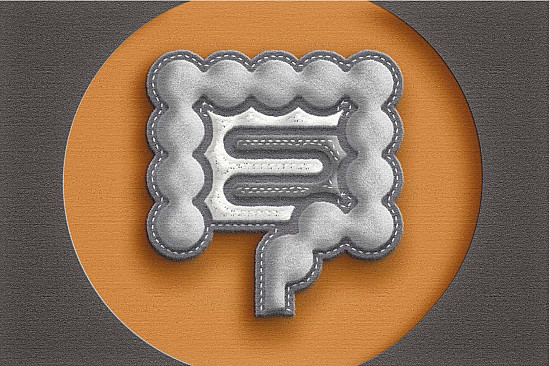Patient-Centered Medical Home: A new model for medical care

The world of primary care is challenging right now. It can be frustrating for both patients and doctors.
From the patient's perspective
Let's say you're basically healthy, but overweight. You can't quite get your diet under control. You'd like your doctor's help and maybe some testing, like thyroid. So you call your primary care doctor. You work through the practice's phone tree and leave a message for the nurse. The nurse may get back to you within a day or a few days, and after you talk, she or he will pass the message on to your doctor, who says you should come in. Then it takes a week or so to get an appointment.
At that visit your doctor talks to you about your diet, and it becomes clear that you tend to eat too many carbs when you feel stressed. Just as you're about to share why you feel stressed, the appointment is over. But your doctor orders a few labs, refers you to a nutritionist, and hands you a list of therapists and suggests you "call around to see who may be a good fit, to discuss stress management." What often happens next is that it takes several days to hear back from a nutritionist (which means you need another appointment likely at a less-than-convenient location). At this point it's all so frustrating that you may or may not ever make those calls to potential therapists.
From the doctor's (my) perspective
Most doctors truly enjoy seeing and talking with patients, and we want to help. That's why we undertook this long, expensive, and psychologically challenging career path. But, doctors must see a certain number of patients to earn their salary, and there has been pressure to see more. Then, every hour of clinic time equals over an hour of desk work: responding to the patient phone and email messages, checking labs, communicating with specialists, reviewing and signing physical therapy and visiting nurse orders, filling out disability forms, writing necessary chart notes, and documenting for billing. And maybe calling a few patients.
Rarely, when the schedule is light, a doctor can have more in-depth conversations with patients. If there had been enough time, you may have shared that you're in a toxic, depressing work environment, and that you overeat to cope with stress and emotional issues. When we know that, doctors can screen for clinical depression and offer treatment, as well as provide more meaningful counseling on coping skills, nutrition, and self-care.
But that's not how it usually works. And doctors dislike it as much as patients do. Doctors hate feeling pressured to see more patients, rushing through visits, referring out to specialists who may or may not communicate back, and then slogging through all that administrative work. The result is frustrated doctors and patients, and more expensive care. We wish there was more time, as well as a nutritionist and a full-time therapist on-site with whom we could smoothly and efficiently confer and collaborate.
But the primary care world is changing… for the better
That entire model is being flipped on its head, which is a good thing.
This is where the concept of the Patient-Centered Medical Home (PCMH) comes in. The "home" does not refer to a place, but rather, to a model of care. Here's how it works.
Your primary care physician will be one member of a team who will offer comprehensive care all under one "roof." Moving forward, people will pay for their health insurance, and their primary care doctor will receive one flat payment from insurance to cover most of the care provided. The amount will be based on the patient's health issues and complexity. There will be far less "fee-for-service," that is, billing for each visit. Services such as behavioral health and nutrition will be located in the office. Physicians and patients will determine specific health goals, which can then result in bonus incentives. Practices will be rewarded for things like helping a patient lose weight and get blood sugar under control — that is, for keeping them healthy and out of the emergency room and hospital.
But how do you keep people healthier more efficiently? We will use more modern and creative tools to keep track of a patient's status and progress from home, with tools such as health equipment that links in to the chart, and computers for virtual visits. We will hire more nursing staff to call patients and assist with monitoring from afar. We doctors will also need to be more accessible, with more phone calls or e-visits. Hiring extra staff and buying new equipment is expensive, but that is the investment we need to make in order to function in this new world.
Not just any practice can up and decide that they're a medical "home." There is a rigorous certification process through an outside agency, and then there is oversight to ensure that goals are being met. The model is also designed with the patient front and center. There is a big patient satisfaction component.
Will it work? Most studies of PCMH-certified practices have shown improvements in diabetes control, adherence to medications, as well as a decrease in post-hospital discharge emergency room visits and deaths, and at lower costs — particularly among chronically ill patients. Most also showed that both patients and providers liked the new model. (A few studies have shown mixed results.)
There is no question that primary care really needs to change, and the PCMH model is incredibly promising. It deserves to be implemented, but also needs to be studied more.
Resources
Patient-Centered Medical Home Recognition and Diabetes Control Among Health Centers: Exploring the Role of Enabling Services. Population Health Management, May 2017.
Team-based versus traditional primary care models and short-term outcomes after hospital discharge. Canadian Medical Association Journal, April 2017.
Association Between Patient-Centered Medical Homes and Adherence to Chronic Disease Medications: A Cohort Study. Annals of Internal Medicine, January 17, 2017.
Medical homes and cost and utilization among high-risk patients. American Journal of Managed Care, March 2014.
Implementation of the patient-centered medical home in the Veterans Health Administration: associations with patient satisfaction, quality of care, staff burnout, and hospital and emergency department use. JAMA Internal Medicine, August 2014.
Medical homes: cost effects of utilization by chronically ill patients. American Journal of Managed Care, February, 2015.
Improving patient care. The patient centered medical home. A Systematic Review. Annals of Internal Medicine, February 2013.
Patient-centered Medical Home capability and clinical performance in HRSA-supported health centers. Medical Care, May 2015.
Patient Centered Medical Home at Massachusetts General Hospital
Disclaimer:
As a service to our readers, Harvard Health Publishing provides access to our library of archived content. Please note the date of last review or update on all articles.
No content on this site, regardless of date, should ever be used as a substitute for direct medical advice from your doctor or other qualified clinician.















